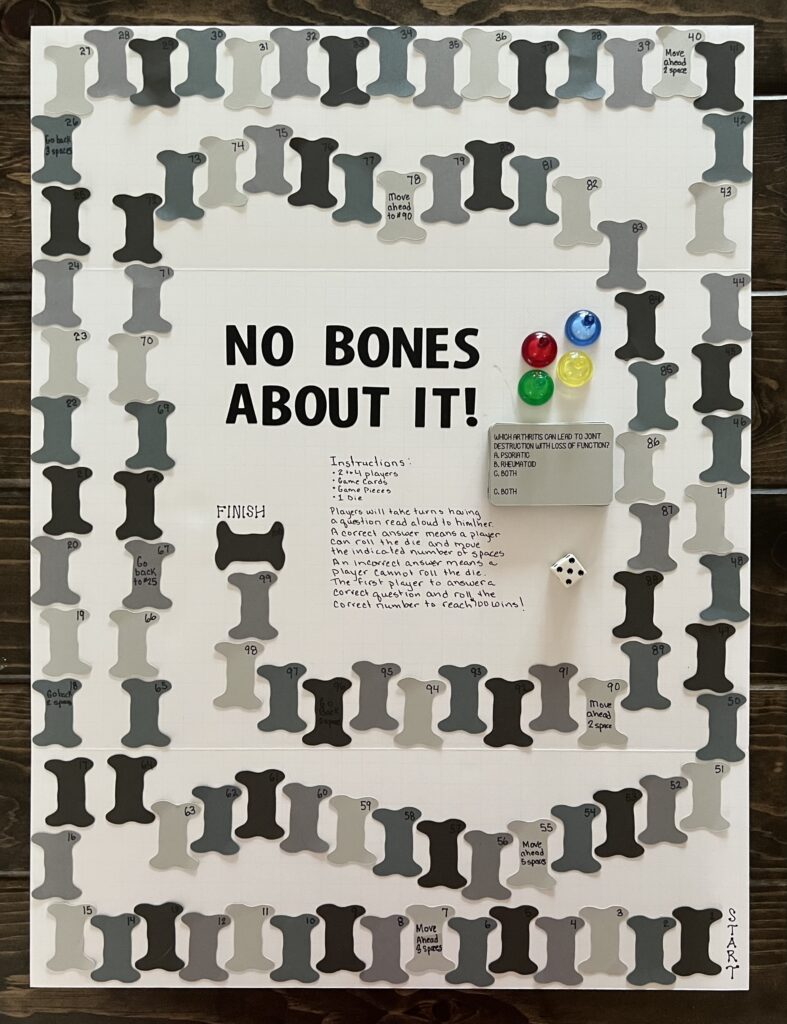The objective this project relates to is: Know the structure of the knee joint and compare this joint type to the other 5 joint types. Arthritis is a condition that causes pain and swelling in one or more joint. It commonly affects the knee joint. I was interested in autoimmune types of arthritis and narrowed my interest to psoriatic and rheumatoid arthritis. It can be difficult to determine whether a person has psoriatic or rheumatoid arthritis. There are many similarities and differences in not only psoriatic and rheumatoid arthritis, but osteoarthritis as well. For my project, I created a game that serves as a review of the structure of the knee, the types of joints, and the characteristics of psoriatic and rheumatoid arthritis.


Arthritis means inflammation of the joints. Psoriatic arthritis and rheumatoid arthritis are both autoimmune related. Psoriatic arthritis is often under diagnosed or misdiagnosed because it has similarities with other arthritic diseases such as rheumatoid arthritis and osteoarthritis. Psoriatic arthritis and rheumatoid arthritis are both common chronic inflammatory diseases which can be characterized by pain and swelling in the joints. If either of them aren’t diagnosed and treated early, they can lead to bone destruction. In order to diagnose either type of arthritis, clinicians need to understand the clinical characteristics, the serological features, the radiographic features, and the comorbidites of each type of arthritis. In diagnosing rheumatoid arthritis, they key clinical characteristic is the confirmation of clinical synovitis in at least one joint. In diagnosing psoriatic arthritis, the key characteristic includes a personal or family history of psoriasis, psoriatic nail dystrophy, and dactylitis. Serological tests can be used as a diagnostic tool to look for certain antibodies in blood. In rheumatoid arthritis, serological tests show many positive tests for the cyclic citrullinated peptides and rheumatoid factor antibodies. Serological tests are not an effective tool to use for psoriatic arthritis. Radiography can be used to determine whether a person has rheumatoid arthritis or psoriatic arthritis but in psoriatic arthritis, the images may appear normal in early stages which can lead to misdiagnosis and/or delays. Comorbidities can be useful in helping to diagnose both rheumatoid arthritis and psoriatic arthritis. Both types of arthritis are found to be linked to other inflammation comorbidites.